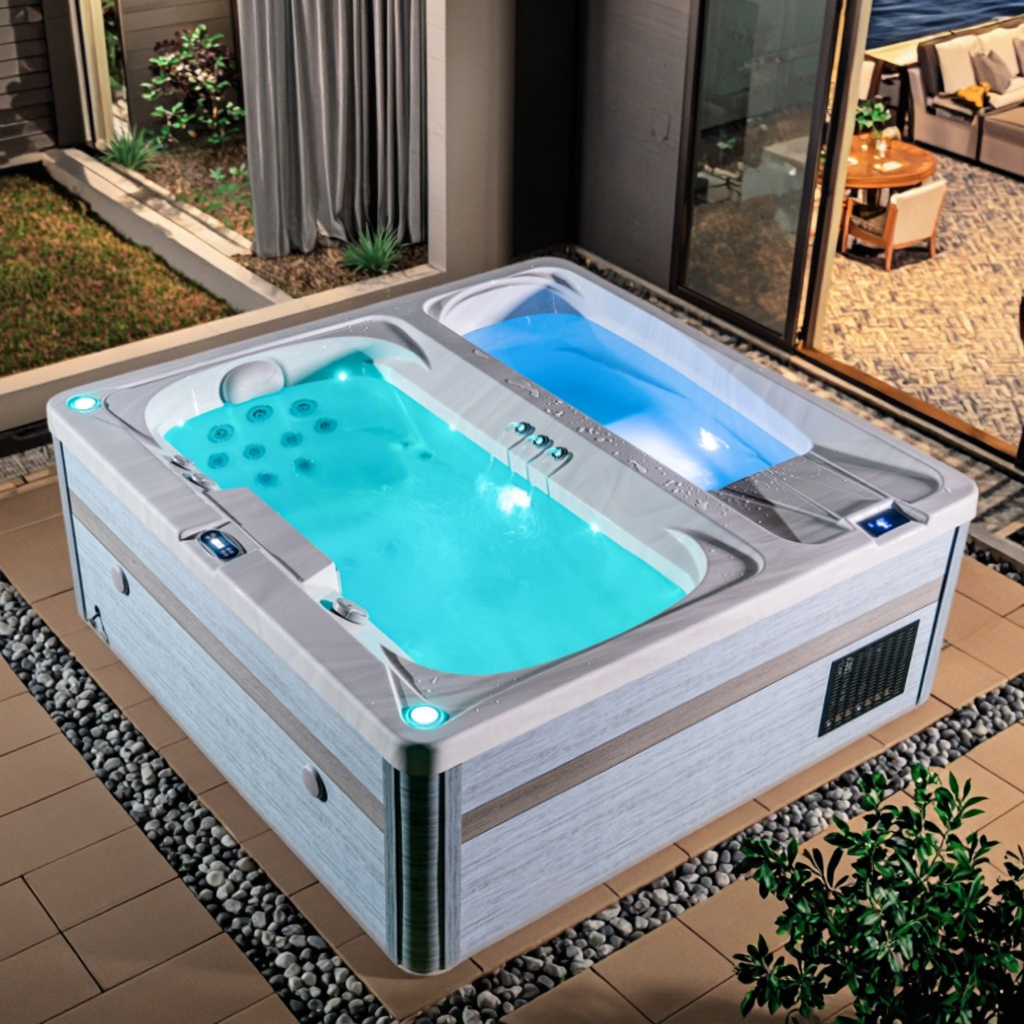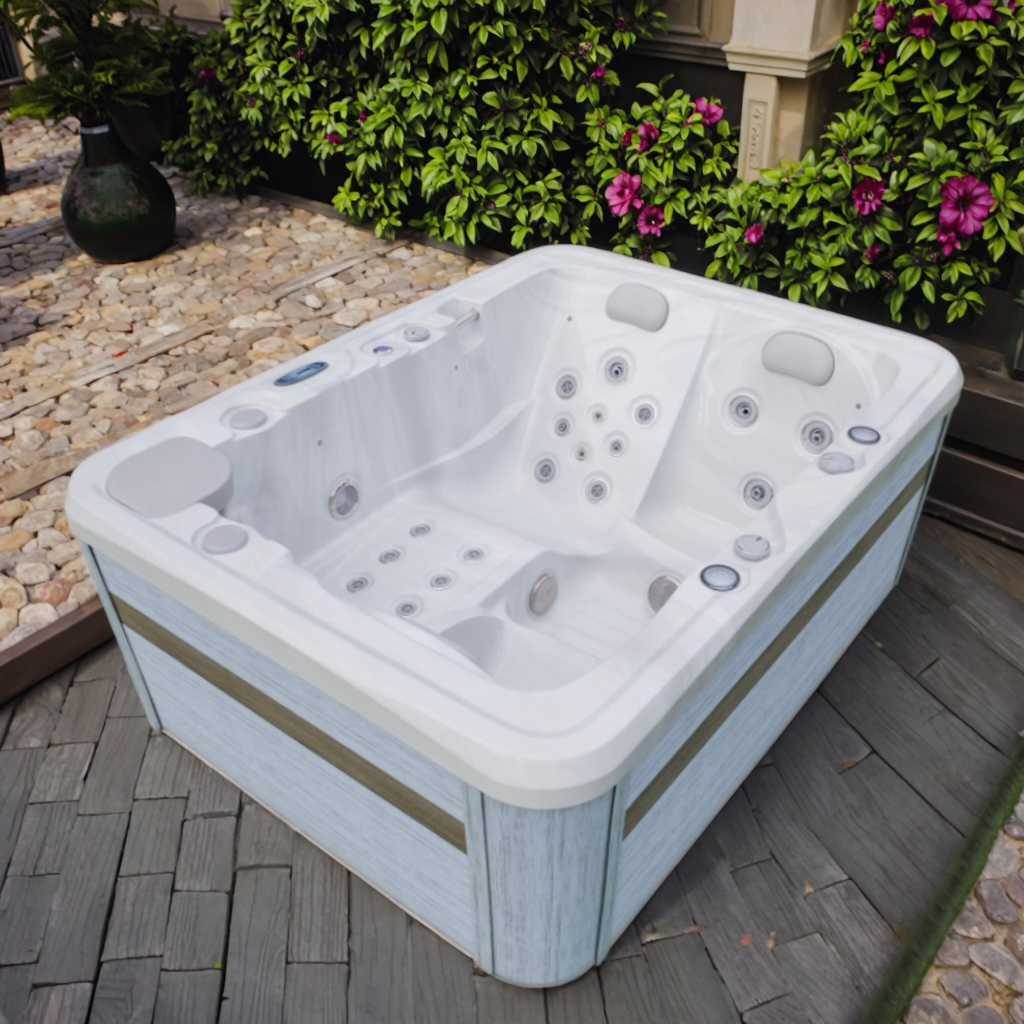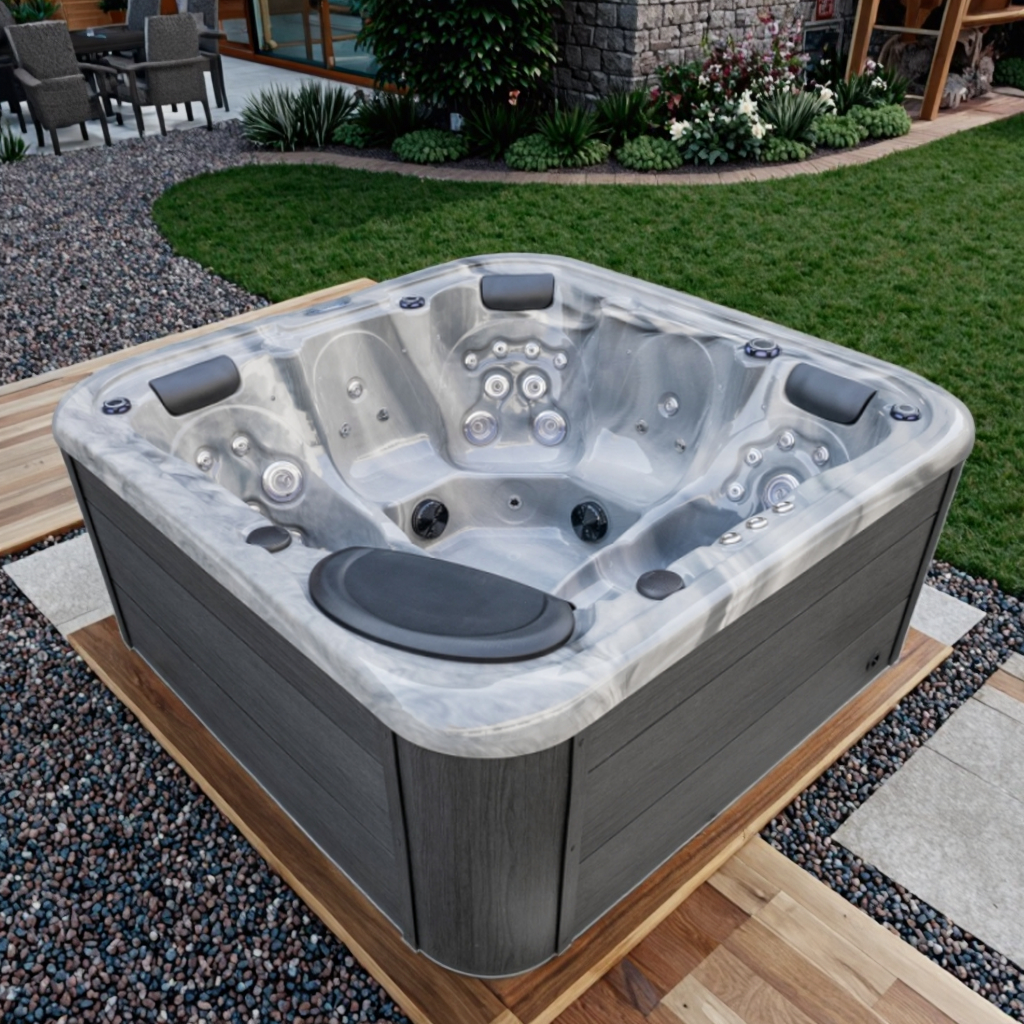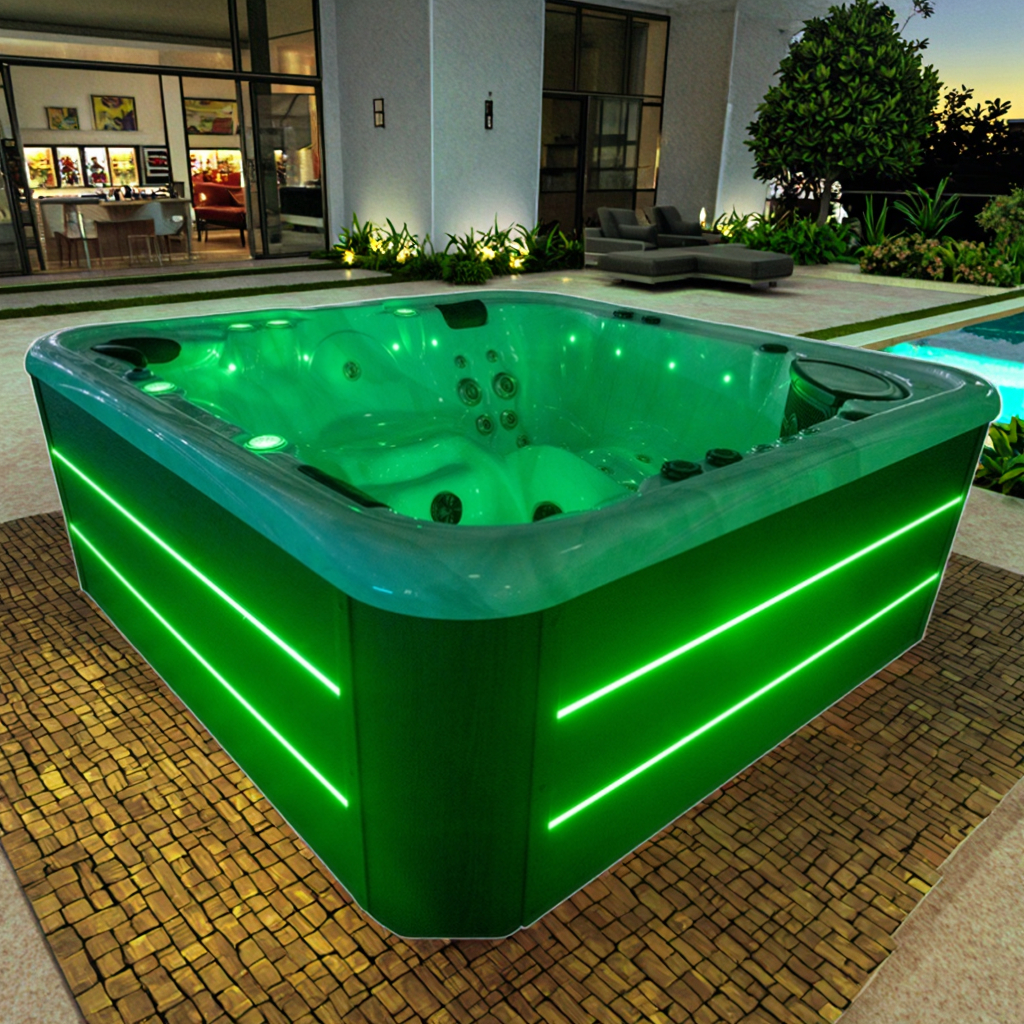
How to tell if a spa is made of acrylic or fiberglass?
2025-10-21 15:30When purchasing, using, or repairing a spa, it's crucial to clearly understand the material used. Different materials determine durability, thermal insulation, surface finish, lifespan, cleaning ease, and repair methods. Acrylic spas and fiberglass spas (also known as "fiberglass tubs"), the two most common types of spas, are often confused. While superficially similar, they possess fundamental structural differences.
This article systematically explains how to accurately determine whether a spa is made of acrylic or fiberglass, from multiple perspectives, to help you make the right decision during purchase and maintenance.

A Basic Overview of Acrylic and Fiberglass Spas
1. What is an Acrylic Spa?
Acrylic spas are constructed from cast acrylic sheets (PMMA) that are heat-pressed and reinforced with multiple layers of fiberglass and resin. Their structural characteristics include a strong, smooth, high-gloss acrylic surface layer and a supporting base.
Features of Acrylic Spas:
· Smooth, vibrant surface
· Good scratch resistance
· Excellent thermal insulation
· Long service life
· Easy to clean
2. What is a Fiberglass Spa?
Fiberglass spas are primarily constructed from a spray-coated mixture of polyester resin and fiberglass. The surface is typically covered with a gel coat for gloss and waterproofing.
Features of Fiberglass Spas:
· Low cost
· Lightweight
· Surface easily abraded
· Susceptible to fading and loss of gloss over time
· Low cost to repair hidden dangers

Judging by appearance and feel
Appearance and feel are the most intuitive ways for users to identify an acrylic spa.
1. Surface Gloss
· Acrylic spas have a smooth, highly reflective surface with a high gloss.
· Fiberglass spas have a relatively low gloss, tending to a matte finish, and even new products may appear dull.
2. Surface Color
· Acrylic surfaces have rich, saturated, and even colors that are resistant to discoloration. Fiberglass bathtubs may have a more monochromatic or yellowish color and tend to fade over time.
3. Temperature and Texture
Acrylic spa bathtubs feel warm to the touch, not cold.
Fiberglass is a rougher material and feels slightly cold and hard.
4. Sound
Tap the bathtub surface with your finger:
Acrylic spa bathtubs have a dull, low-pitched sound, with a heavy feel.
Fiberglass bathtubs have a crisp, resonant sound, and appear hollow.

Judging by Structural Levels
1. Observe the Edges or Joints
If you can inspect the edges of the bathtub, pipe joints, or unsealed areas on the bottom:
Acrylic spa bathtubs: A thick layer of acrylic (usually 2-5mm thick) is visible, with a fiberglass reinforcement layer underneath.
Fiberglass bathtubs: The overall surface is thinner, with no visible acrylic panels. The interior is often a one-piece glass fiber composite material.
2. Layer Identification
Acrylic spa tubs are essentially composite structures, consisting of a "top layer + back layer." The top layer is smooth and hard, while the back layer is rough and has a resin seal. Fiberglass bathtubs, on the other hand, are mostly single-layer or thin composite layers, making them prone to warping and cracking.
Judging the Material by Weight
For the same size:
· Acrylic spa tubs are generally slightly heavier than fiberglass spa tubs. The high density of acrylic sheets (approximately 1.18g/cm³), combined with the composite reinforcement, contributes to their overall strength.
· Fiberglass bathtubs, primarily constructed of spray-coated fibers and resin, are lighter.
Note: If you find the tub incredibly light and effortless during transport, it's likely made of fiberglass.
Judging by User Experience
1. Thermal Insulation
· Acrylic spa tubs retain heat well, maintaining hot water for extended periods.
· Fiberglass bathtubs cool quickly, making them suitable for shorter soaks.
2. Noise Performance
· Acrylic absorbs sound well, so the noise from motors and pumps during operation is not easily transmitted. Fiberglass, on the other hand, is highly conductive, so you may hear more noticeable noise during use.
3. Durability and Aging Performance
· With proper care, acrylic spa tubs can last over 15 years without yellowing or cracking.
· Fiberglass tubs may experience darkening, cracking, and delamination after 5-8 years.
Using Chemical Identification Methods (If Possible)
This section is for repair personnel or professional users:
· A small sample can be tested for solvents. Acrylic reacts significantly to solvents such as alcohol and chloroform.
· Due to its different resin composition, fiberglass is less reactive to solvents but is sensitive to high temperatures.
Warning: Non-professionals should avoid using chemical identification methods to avoid damaging the material.
Judging by Price and Brand (Reference Factors)
Although price doesn't directly reflect the material, generally:
· Acrylic spa tubs on the market are more expensive than fiberglass tubs of the same specifications;
· If the price is lower than the market reference standard and the brand is unclear, it's likely made of fiberglass.
Some unscrupulous sellers may claim their products are "composite acrylic" when they are actually "spray-coated fiberglass." Users should be particularly cautious.

Analysis of Common Misconceptions
Misconceptions | Correct Interpretation |
A glossy surface is acrylic | Fiberglass bathtubs may also have a glossy coating, but glossiness doesn't necessarily mean acrylic |
Lightweight is fiberglass | Sheet acrylic products can also be lightweight, so consider multiple factors |
A high price means it's an acrylic spa tub | Some brands may inflate prices, but the material is still a fiberglass composite |
| Yellowing after high temperatures means it's fiberglass | Poor-quality acrylic may also yellow; check to see if it's pure PMMA |
| Fiberglass is difficult to clean | Improper use of cleaning agents can also cause stains on acrylic surfaces |
Comprehensive Judgment Suggestions and Conclusions
To accurately identify whether a spa tub is acrylic, consider the following:
· Appearance Observation: Check for a uniform gloss and distinct sheet material layers;
· Touch Test: Check for warmth and a lack of graininess;
· Sound Test: Check for a dull, "hollow" sound;
· Edge Observation: Check for any demarcations between acrylic sheets;
· User Experience: Check for heat retention, sound absorption, and ease of cleaning;
· Combine Price and Brand: Comprehensively assess the value for money and identify false advertising.
If you're in doubt about purchasing or using an acrylic spa tub, consider combining the above methods to ensure you're getting a genuine, high-quality, and reliable one.
Who is LOVIA SPA and what products do they supply?
LOVIA SPA, founded in 1989 and headquartered in Guangzhou, China, is a professional manufacturer, supplier, and exporter of high-quality outdoor spas, swim spas, and hot tubs. Our factory covers 45,000 square meters and employs over 200 skilled workers and 20 industry experts, ensuring every product meets international standards.
Since entering the international market in 2004, LOVIA SPA has been a trusted brand for wholesale and retail buyers seeking reliable spa products. We offer customizable spa solutions, competitive pricing, and promotions for bulk purchases.
